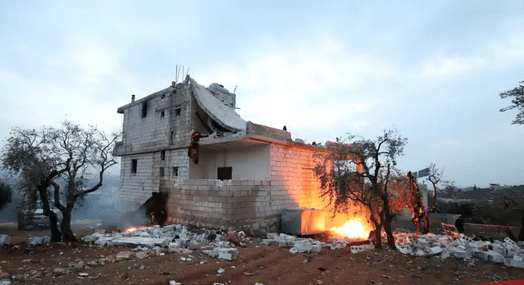
Islamic State out to prove it’s more than its leader
The Islamic State is so far showing few signs of faltering, just days after U.S. special operation forces dropped into northwest Syria and surrounded the terror group’s leader, who they say then blew himself up without a fight.
Intelligence agencies and independent analysts tracking IS on social media have yet to find any official acknowledgement of the death of Amir Muhammad Sa’id Abdal-Rahman al-Mawla, or word of a replacement.
Instead, they say IS social media operatives and followers have mostly acted as though the loss of the terror group’s second leader in less than three years is immaterial.
“It’s more business as usual, continuing to claim attacks in Africa, Afghanistan, Syria,” according to Raphael Gluck, the co-founder of Jihadoscope, a company that monitors online activity by Islamist extremists.
“[It] proves their point that the ISIS dream doesn’t die with the killing of their leader,” he added, using another acronym for the terror group.
‘Business as usual’
In one video from the IS-run Amaq News Agency, and shared by the SITE Intelligence Group, IS propagandists show fighters with the terror group’s West Africa Province (ISWAP) overrunning a Nigerien military post.
A second Amaq video, posted a couple of days later and shared by SITE, shows the wreckage of a vehicle bombed by ISWAP fighters in near the Nigerien town of Marte.
Just a day after al-Mawla’s death, IS’ Central African Province claimed it freed 20 prisoners in an operation in eastern Congo.
Some analysts who study IS say while much of what the terror group is putting out on social media is about branding and trying to maintain its fearsome image, some of it is also a reflection of realities on the ground.
“The organization is ticking along quite nicely, even in this period now,” Hans-Jakob Schindler, senior director of the New York and Berlin-based Counter Extremism Project (CEP), told VOA.
“Yes, you killed the leader. That’s a big blow,” said Schindler, who spent three years overseeing the United Nations team that tracked IS, as well as rival terror group al-Qaida and also Afghanistan’s Taliban. “But the organization itself is not strategically weak … a network-based organization can always replace a leader.”
Accounts from countries closely following the fortunes of IS would seem to back that up.
Intelligence shared with the United Nations for a report released past Friday warned that despite some serious setbacks, IS “continues to operate as an entrenched rural insurgency in Iraq and the Syrian Arab Republic, exploiting the porous border between the two countries, while maintaining operations in areas of low security pressure.”
The U.N. report, compiled prior to al-Mawla’s death, also said IS commanded a fighting force in Iraq and Syria of as many as 10,000 followers and that the group maintained access to about $50 million in cash reserves.
U.S. intelligence estimates suggest IS may enjoy even more support, with up to 16,000 fighters spread across the two countries.
At the same time, IS affiliates have continued to grow stronger, particularly in Africa and in Afghanistan, where IS-Khorasan province has doubled in size in recent months, to close to 4,000 fighters.
Intelligence provided to the U.N. from member states further indicates that IS-Khorasan now “controls limited territory in eastern Afghanistan” and that it is “capable of conducting high-profile and complex attacks.”
The same intelligence further suggests the IS Afghan affiliate has been getting an infusion of cash from IS core in Iraq and Syria, perhaps as much as $500 million over the past six months.
Under timelines shared by U.S. Defense Department officials, IS-Khorasan could also be just three months away from regenerating the capabilities required to conduct attacks on the West.
Source: VOA News





